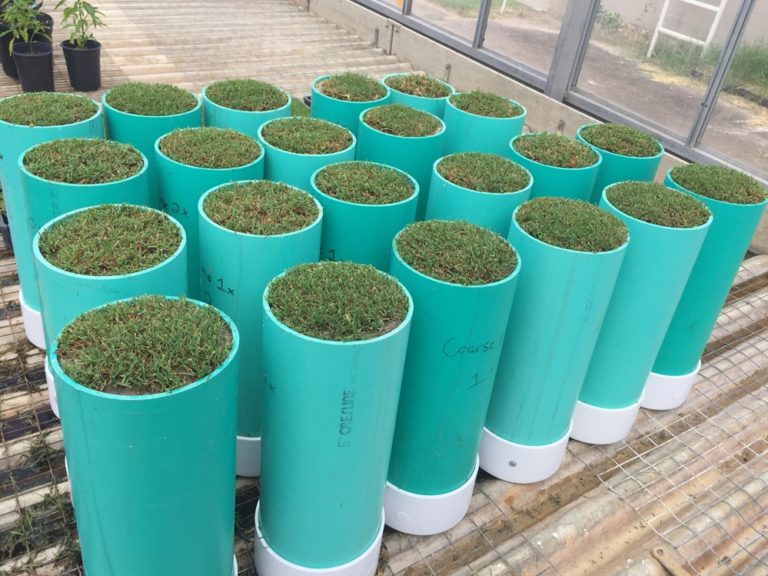Repurposed coffee grounds can benefit turfgrass and landscapes

Remember when grandma dumped her coffee grounds on the flower bed and garden? Well, she was onto something, and one Texas company is now utilizing Texas A&M AgriLife research to capitalize on the value of this waste product.
Ben Wherley, Texas A&M AgriLife Research turfgrass ecologist in the Texas A&M Department of Soil and Crop Sciences, College Station, has taken advantage of the growing popularity in cold-brewed coffee and the truckloads of spent coffee grounds not previously available.
He and graduate student Garrett Flores recently concluded two studies to determine how much value these cast-off coffee grounds might have.
Their study attracted the attention and a seed grant from the U.S. Golf Association Green Section as well as GeoJava, a company started by Chad McNair, CEO of Aspen Beverage Group in San Antonio.
David Mayer, owner of Mayer Materials out of Fort Worth, said, “Initially I thought it was kind of cute and quaint that someone would be looking at coffee grounds picked up from Starbucks or the local convenience store to try to build a product around.
“We have been using coffee chaff from the two largest coffee roasting companies up here for years as a key component in our compost products, but never had the volume to justify looking at it as a stand-alone product line.”
After visiting with Wherley’s team, Mayer said they quickly realized that spent coffee grounds may have potential not only to improve existing fertilizer performance but also to potentially rival peat moss — a non-renewable resource — as a viable organic matter component in U.S. Golf Association, USGA, root-zone mixes.
The USGA has specific guidelines for root-zone mixes, which must include organic matter to improve the water holding capacity of the soil. Peat moss is the most commonly used organic matter at this time.
“We were most excited about this part of the research, for it could have an enormous impact in the golf course and sports field construction industry,” Mayer said.
A partnership with McNair and his team was created, Texas Java Partners LLC, that researches, develops and produces innovative coffee-based fertilizers, composts and organic matter root-zone amendment products.
Wherley said Aspen Beverage Group supplied much of the spent coffee grounds for his team’s research projects, which looked at the cast-off products as a surface application, perhaps as a fertilizer or compost, and as a soil root-zone amendment in sand-based systems.
Spent coffee grounds have about a 2.5-3 percent nitrogen content, and a carbon-to-nitrogen ratio of about 20 to 1, which seemingly could make them desirable for fertilizer application, Wherley said.
He and Flores compared fresh and composted grounds to other organic and synthetic fertilizers and sphagnum peat moss, which is commonly used as a soil amendment in sand-based sports fields and golf course putting greens.
The two-year topdressing fertilizer study tested seven different organic and synthetic fertilizers against coffee grounds — fresh and composted — as well as a control. The study also tested two application rates for each treatment.
“Our observation from this study determined that direct application of spent coffee grounds by themselves provided minimal benefit,” Flores said. “However, when the spent coffee grounds were added with another source of fertility, the nutrients appear to be retained over an extended period compared to organic and especially synthetic fertilizers.”

